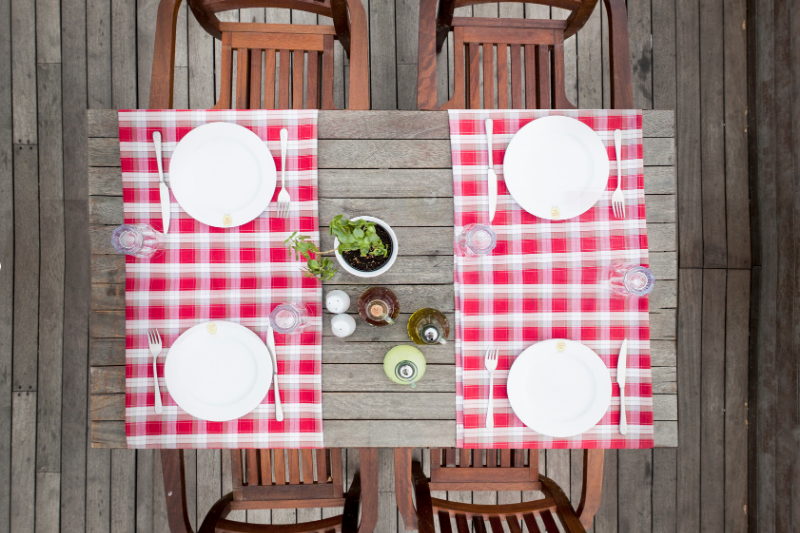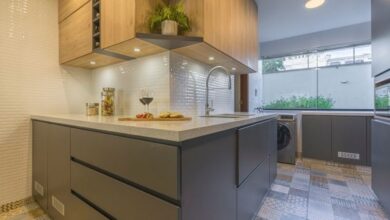What does table layout mean? How is the table layout done?

What does table layout mean? How is the table layout done?
Breakfast and dinner are rituals that are considered important and require special preparations in many cultures. It fulfills families’ desire to make the most of every second of their precious time together. Daily dinners are the perfect moments to relieve the tiredness of the day.
You can leave the bad energy of the week behind by catching up with your loved ones over Sunday breakfast. Having the culture to adapt to all kinds of table decorations in life will be a great asset for you.
Table layout is a layout that is not governed by strict rules. It is an order recommended taking into account the easiest to use forks, spoons, knives, plates and other things used on the table. When looking at the layout of the table, you notice that there is more than one fork and more than one spoon. One reason for this is that you can consume the foods you want to taste on your palate immediately without mixing them.
Another reason is that it is easier to add frequently eaten foods such as salads to your plate. The most important distinction for many people between sweet and salty foods is also one of the reasons for separating dessert forks from dinner forks. The structure, size, tip and sharpness of forks, spoons and knives used to eat different foods also differ from each other. For example, a butter knife and a steak knife do not have the same sharpness and serrations.
Table setting rules, which are not at all strict when dining at home with the family, can contain important rules for formal, high-level meals. For example, spoons and knives must be on the right, forks and napkins on the left.
One of the most important questions about table layout is: “How do I arrange plates on the table?”
If it’s a formal table, you should have four different plates on your table: a serving plate, a dinner plate, a salad plate, and a soup bowl.
1) Supla (Serving Plate): Below is the Supla as a flat serving plate. It is also called cover plate. The flat plate that serves as a charger is not intended for serving food. Food can be served or shared on the dinner plate, salad plate and soup bowl.
2) Dinner plate: Stylish dishes are plates with slightly higher edges that are not flat and are placed in or served with main dishes such as meat and chicken. Especially at formal tables, salad should not be placed on the main dish.
3) Salad plate: You can take as much salad as possible from the table and put it on your salad plate to eat together. Then you can place your salad plate in the top right and enjoy the greens. If you’re attending a formal dinner, you probably have a special fork and knife for your salad. According to etiquette, the salad is eaten with a fork; a knife is used for large pieces.
4) Soup bowl: Servings at the table usually start with the soup, so having it at the top also makes it easier to use. It is the deepest compared to other plates. The soup served in your soup spoon may be very hot. In this case, the wrong method would be to cool them down by placing them on your spoon and blowing on them. Keeping etiquette in mind, you need to aerate your soup slowly using a tablespoon.
When the table is set, it’s not just the plates that take their proper place on the table. Forks, spoons and many other items are placed on the table with their special names. The elements in the table layout can be listed as follows:
- Bread plate
- Butter knife
- napkin
- salad fork
- dinner fork
- teaspoon
- dessert fork
- Water glass
- Soft drink glass
- teaspoon
- tablespoon
- salad knife
- Table knife
- dinner plate
- Soup bowl
- salad plate
Of course, it is not necessary to have all of these listed items in every table. It has been shared as a list of tables that can be set in any situation.

How should the table layout of your invitations catch the eye?
The table layout can vary depending on the occasion. In everyday life there are not always important business lunches and celebratory tables with managers. There are also tables where you can talk about everyday topics with your friends in a comfortable atmosphere.
Of course, there is also the daily table that you set for the ritual of eating regularly with your family every day. Some information you need to know to create a table layout suitable for all of these situations is as follows.

Choose a decoration theme for your table
When setting the table for your important guests, your table should have a theme. It is recommended to set the theme of your table according to the model of your tableware to ensure integrity. The decoration theme will significantly speed up your work and even make it easier for you to choose which dishes to put on the menu.

Use colorful runners and placemats
Rectangular strips sewn at both ends in a triangular shape that divide your table lengthwise or widthwise are called runners. Runners look particularly striking on cream and white tablecloths. It is not recommended to use a runner with patterned tablecloths.
A patterned or plain runner on a floral tablecloth creates a visual eye-catcher. When designing a table with runners, the harmony on the table is further increased by placing accessories, especially on the runners.
In American service, a plate, knife and fork are placed on top, usually in a rectangular shape, and placed under the table. Placemats are preferred to create a bohemian atmosphere, especially at day tables. It is not recommended to use it with a runner; However, visual harmony can be achieved with runner placemat sets that have the same pattern or color as a set.

Follow the rules for arranging forks, spoons, glasses and plates
When designing a table setting, the arrangement of forks, spoons and knives becomes more and more complicated as the formality increases. Daily table decorations include a spoon, a knife, a dessert fork and two forks for dinner.
However, at important business meals there are at least two spoons, two knives and three forks on the table. In general, the following order applies from left to right:
- napkin
- salad fork
- dinner fork
- Dinner plate (serves as a rim in the middle)
- Table knife
- salad knife
- tablespoon
- teaspoon
In addition to this order, there is a dessert fork at the top of the dinner plate with the head facing right and a dessert spoon at the top with the head pointing to the left.

Elegant detail in table decoration: eating rules
When your loved ones or your boss invites you to dinner, you should search your memory and remember every detail of the table rules that you have learned since childhood.
While there are dinner forks, tablespoons, and dinner knives on the table in your daily life, there may be a formal table setting waiting for you at the table you are invited to. There are no written rules; But we have listed some of the etiquette rules that have been observed for many years:
1) Spoons and knives should always be held with the right hand and placed accordingly on the table. The spoon should only be placed in the left hand when eating pasta.
2) While spaghetti noodles should be eaten with a fork or wrapped around a spoon, rice should be eaten with a fork.
3) During meals, during breaks to drink, buy bread or chat, the fork and knife should not rest on the plate like a bridge. Care should be taken to place it on the right and left sides in normal order.
4) Should a mishap occur during the meal, such as a stone falling out of the meal, it should be resolved unnoticed and taking into account the efforts and efforts of the host so as not to disturb anyone.
5) For hot drinks such as tea and coffee, the spoons should be left on the plate and not in the cup.





